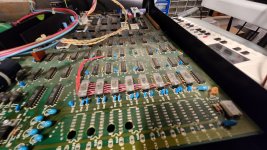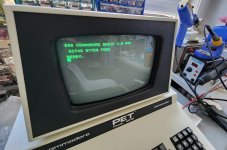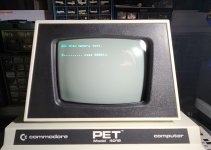Hi everyone.
I am trying to fix my trusty little Commodore PET 4016 that was, back in the days, modded to 32K with this RAM arrangement that should be hell to troubleshoot.
I've ordered a ROMULATOR and it boots normally when only dip switch 3 is on, which should be expected, since it replaces RAM and ROM.
I then did a PETTEST on it and god, do I get a lot of errors... I have to assume that the problem is RAM related, but with that much errors, I wonder if it's more of a RAM adressing chip or something?
I've then did a PET RAM/ROM/VRAM test and got the faults seen on the associated picture.
What should be my next move? I have a lot of testing equipment, but I'm more into audio devices fixing and low level computing is not where I shine.



I am trying to fix my trusty little Commodore PET 4016 that was, back in the days, modded to 32K with this RAM arrangement that should be hell to troubleshoot.
I've ordered a ROMULATOR and it boots normally when only dip switch 3 is on, which should be expected, since it replaces RAM and ROM.
I then did a PETTEST on it and god, do I get a lot of errors... I have to assume that the problem is RAM related, but with that much errors, I wonder if it's more of a RAM adressing chip or something?
I've then did a PET RAM/ROM/VRAM test and got the faults seen on the associated picture.
What should be my next move? I have a lot of testing equipment, but I'm more into audio devices fixing and low level computing is not where I shine.





